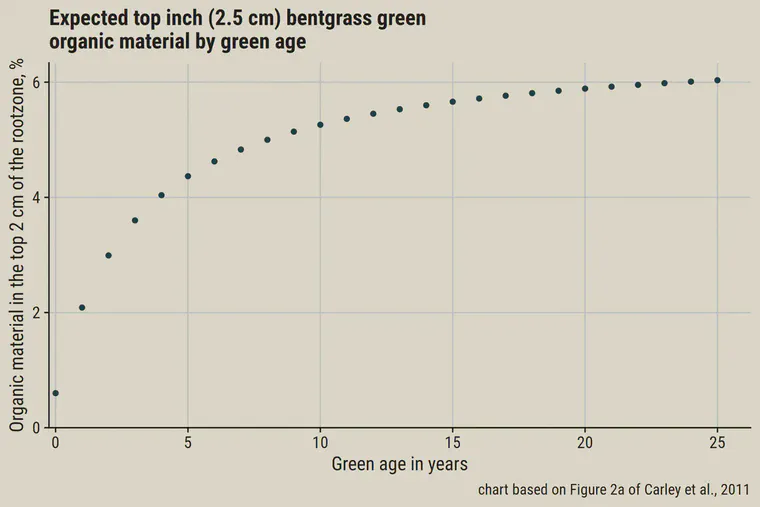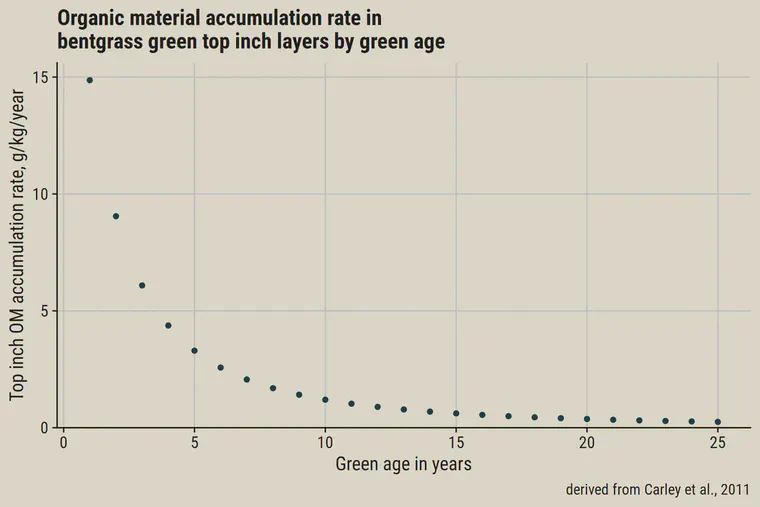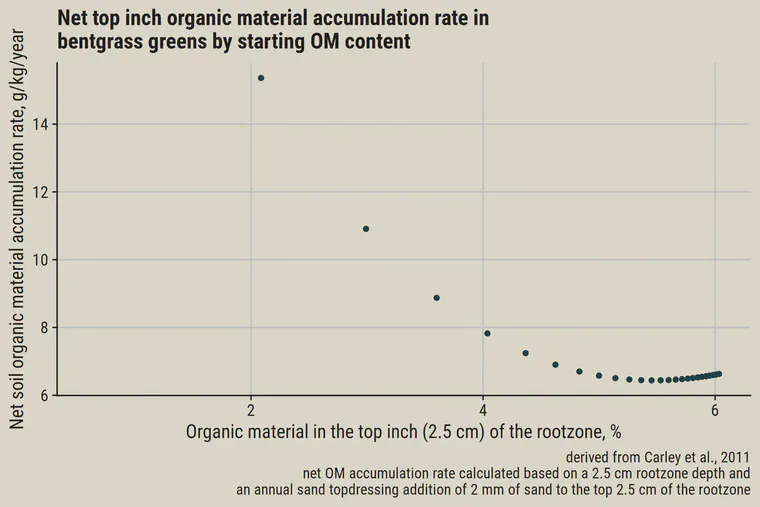Organic material accumulates more rapidly in putting green soils under these two conditions
An interesting phenomenon happens when grass is planted on a golf course putting green. There’s typically not much organic material in the soil when the green is first planted. The organic material increases rapidly, to about 4% organic material in the top inch (2.5 cm) of the rootzone within five years after planting. The organic matter continues to increase as the years go by, but as that increase in OM happens, the accumulation rate of organic matter decreases.

I base these calculations off the data and equations shown in Carley et al.’s Soil organic matter accumulation in creeping bentgrass greens: a chronosequence with implications for management and carbon sequestration.
I presume that it is not just bentgrass greens which have an organic matter accumulation that happens like this, and that all turfgrass species planted in sand rootzones and maintained as putting greens follow approximately this same pattern of accumulation.
Because the organic matter in the top inch of the rootzone increases much more rapidly when the greens are younger, and because younger greens themselves have less organic matter than do older greens, I can infer two things.
Younger greens (or greens artificially kept in a younger state, i.e. through addition of sand to dilute organic matter) accumulate organic material in the top inch more rapidly than do older greens.
Greens with lower organic matter content in the top inch accumulate organic material more rapidly than do greens with more organic material in the top inch.
One implication of this is that the very process of reducing soil organic material in the top inch of the rootzone leads to a green condition with a more rapid organic matter accumulation rate. On the other hand, allowing the soil organic material to increase in the top inch of the rootzone may lead to a reduction in the organic matter accumulation rate.

The organic matter accumulation rate decreases as the greens age. That’s to be expected. The organic matter content of the top inch of the putting greens also increase with age of the green.
By calculating what would be expected to happen to the organic matter content of the top inch of the green with the addition of topdressing sand, and then accounting for how the organic matter does change on average, it is possible to make a chart like the one below. This shows that when the organic matter content of the top inch is kept at around 2%, for example, the net OM accumulation rate in that zone is expected to be about twice what it would be if the OM were at 4%.

The implication of this is that the very process of making greens younger, by adding sand, and by reducing organic matter, appears to inherently increase the organic material accumulation rate at the surface of those same greens.